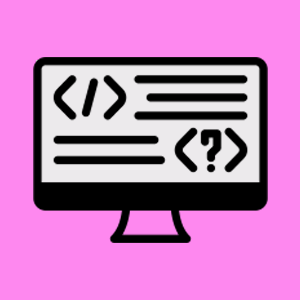 The quest for optimal backend web development tools and software is paramount for crafting resilient, scalable, and high-performance web applications. As technology continues its rapid march forward, developers are increasingly seeking tools that not only boost efficiency but also fortify security and offer unparalleled flexibility. In this landscape, we present the top 10 backend web development tools and software of 2024, meticulously curated to navigate the dynamic requirements of the contemporary digital age. These tools not only stand as pillars of innovation but also as indispensable assets for developers striving to create web applications that meet and exceed the expectations of today’s users.
The quest for optimal backend web development tools and software is paramount for crafting resilient, scalable, and high-performance web applications. As technology continues its rapid march forward, developers are increasingly seeking tools that not only boost efficiency but also fortify security and offer unparalleled flexibility. In this landscape, we present the top 10 backend web development tools and software of 2024, meticulously curated to navigate the dynamic requirements of the contemporary digital age. These tools not only stand as pillars of innovation but also as indispensable assets for developers striving to create web applications that meet and exceed the expectations of today’s users.
Node.js:
Node.js has consistently held its position as a dominant backend development tool. It allows developers to use JavaScript on the server side, enabling seamless communication between the server and client. With a non-blocking, event-driven architecture, Node.js excels in building real-time applications, making it a go-to choice for scalable and efficient backend development.
Express.js:
Express.js, often paired with Node.js, is a minimal and flexible web application framework that simplifies the development of robust APIs and web applications. Its middleware architecture and modular design make it easy to extend functionality. Express.js is known for its speed and simplicity, making it a preferred choice for building RESTful APIs.
Django:
Django, a high-level Python web framework, has gained widespread popularity due to its emphasis on clean and pragmatic design. It follows the “don’t repeat yourself” (DRY) principle, allowing developers to build applications rapidly. With built-in features like an ORM (Object-Relational Mapping) system and an admin interface, Django is a powerful tool for building scalable and maintainable web applications.
Flask:
For developers seeking a lightweight and modular Python framework, Flask is an excellent choice. Flask is known for its simplicity and flexibility, making it easy to get started with web development. Despite its minimalistic approach, Flask provides the necessary components to build robust web applications while allowing developers the freedom to choose their preferred extensions and libraries.
Ruby on Rails:
Ruby on Rails, often referred to as Rails, is a full-stack web application framework written in Ruby. Known for its convention over configuration (CoC) and don’t repeat yourself (DRY) principles, Rails promotes rapid development without sacrificing code quality. Its integrated tools and emphasis on convention make it a favorite among developers looking to build feature-rich and maintainable web applications.
Spring Boot:
Java developers turn to Spring Boot for its efficiency in building production-ready, stand-alone Spring-based applications. It simplifies the configuration process and provides a set of conventions for rapid development. With built-in support for various data sources, Spring Boot facilitates the creation of scalable and enterprise-grade backend systems.
Laravel:
Laravel, a PHP web framework, has gained popularity for its elegant syntax and developer-friendly features. It simplifies common tasks, such as routing, caching, and authentication, allowing developers to focus on building innovative features. Laravel’s active community and extensive documentation make it an ideal choice for PHP developers.
ASP.NET Core:
Developed by Microsoft, ASP.NET Core is a cross-platform, high-performance framework for building modern, cloud-based, and internet-connected applications. It supports multiple programming languages and integrates seamlessly with popular front-end frameworks. ASP.NET Core’s modular architecture and cross-platform compatibility make it a versatile choice for backend development.
MongoDB:
As a leading NoSQL database, MongoDB stands out for its flexibility and scalability. Its document-oriented data model allows developers to work with dynamic schemas, making it well-suited for agile development. MongoDB’s ability to handle large amounts of unstructured data and its support for horizontal scaling make it a preferred choice for modern web applications.
Redis:
Redis, often referred to as a data structure server, is an open-source, in-memory data store that supports various data structures such as strings, hashes, and sets. It excels in providing high-performance caching, session storage, and real-time analytics. Redis’s simplicity and speed make it an indispensable tool for improving the performance of web applications.
Conclusion
The landscape of backend web development is continually evolving, with developers seeking tools and software that streamline the development process and enhance application performance. The top 10 backend web development tools and software listed here represent a combination of established favorites and emerging technologies, offering developers a diverse range of options to meet the demands of modern web development in 2024. As the industry progresses, staying informed about the latest advancements will be key to building cutting-edge and efficient web applications.
